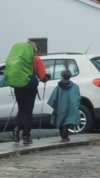JustOneGuy
Active Member
- Time of past OR future Camino
- Aug 2024: GR130, Apr 25: Camino Primitivo?
I'm sorry to flood the forum with new threads these days, but I only made the decision to do this 8-day walk two weeks ago, and I'm starting it in just over one, Saturday, August 24
Now, granted that:
1) I will not do the CF or a "standard" camino but the "Camino Real de la Costa y Medianía," or GR130 (see link), which does not have many refreshment places (zero in some 20+ km stages that are also quite strenuous)
2) I would like to stay within the limit of 3 liters of water (it can get very hot here) and 0.5 kg of food.
What foods and liquids do you suggest I bring?
As for liquids I am thinking of bringing at least half sports drinks, and buy them everytime I find one of those local, small supermarket typical here. What are your thoughts?
As for food, on the other hand, I am rather undecided whether to go for sport bars of the kind used by ultra runners, or bring normal foods such as fruit, bread, ham (dinner will be at some small restaurant or at the Hostel).
Advice as usual very welcome. And thanks as always in advance for your time and comments!
Now, granted that:
1) I will not do the CF or a "standard" camino but the "Camino Real de la Costa y Medianía," or GR130 (see link), which does not have many refreshment places (zero in some 20+ km stages that are also quite strenuous)
2) I would like to stay within the limit of 3 liters of water (it can get very hot here) and 0.5 kg of food.
What foods and liquids do you suggest I bring?
As for liquids I am thinking of bringing at least half sports drinks, and buy them everytime I find one of those local, small supermarket typical here. What are your thoughts?
As for food, on the other hand, I am rather undecided whether to go for sport bars of the kind used by ultra runners, or bring normal foods such as fruit, bread, ham (dinner will be at some small restaurant or at the Hostel).
Advice as usual very welcome. And thanks as always in advance for your time and comments!






















